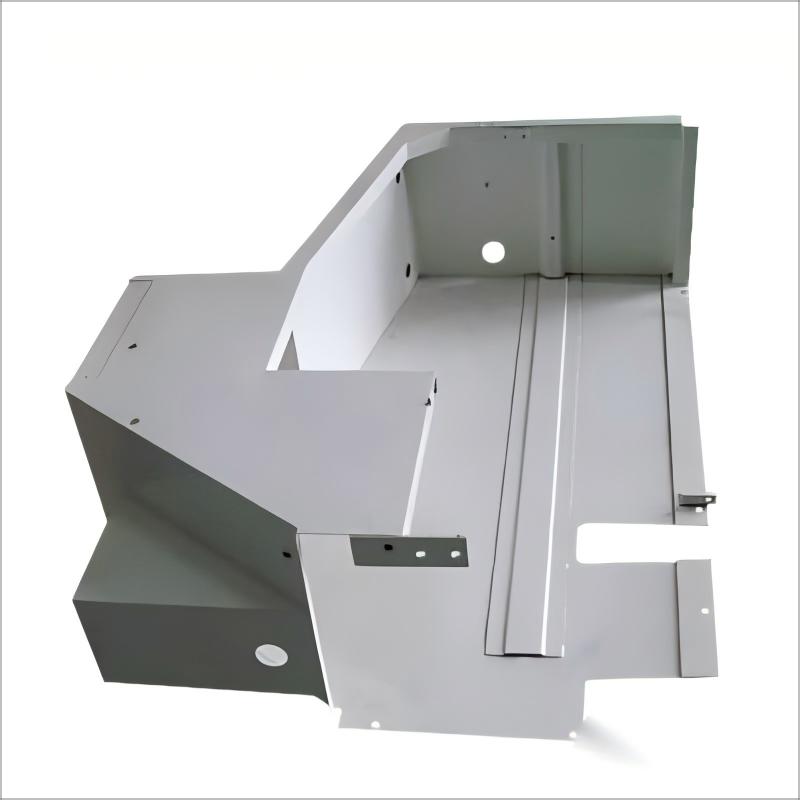
Sheet metal fabrication is the process of precisely transforming thin flat sheets, generally less than 20mm, of steel or aluminum into a variety of metal structures and products. This transformation is accomplished through cutting, bending, punching, stamping, welding, and careful assembly. The inherent versatility of sheet metal allows it to be cut, bent, or stretched into almost any desired shape, which is primarily accomplished through cutting and controlled burning techniques.
In the sheet metal fabrication process, specialized tools such as belts and cut saws are essential to ensure consistent and uniform cuts throughout the operation. Cutting torches are able to cut large metal sheets with minimal effort and are extremely efficient.
To facilitate the formation of sharp bends and angles within the metal, sheet metal fabricators use press brakes. There are many types of these machines, each with specific functions and uses in the fabrication process. Materials used in sheet metal fabrication typically include aluminum, steel, stainless steel, copper, and brass, which can create a variety of metal parts.
Materials Used in Sheet Metal Fabrication:
The choice of materials is a crucial factor in ensuring the success of your sheet metal fabrication project. This section discusses some of the best materials for sheet metal fabrication. It is worth noting that there are a wide variety of sheet metal types and it is advisable to seek guidance from professionals such as Cindy Long before making any final decisions. Here are some highly recommended materials:
1. Aluminum
Aluminum is one of the most commonly used materials in sheet metal fabrication. It is known for its lightweight properties, impressive strength, and corrosion resistance. In addition, it also has easy processability, which enables the creation of diverse products.
2. Stainless Steel
Stainless steel holds an important place in sheet metal fabrication choices. Its strength and durability make it ideal for a wide range of applications. This material is corrosion-resistant and easy to work with.
3. Carbon Steel
Carbon steel is a type of steel rich in carbon and is one of the most commonly used materials by sheet metal fabricators. Its physical and structural properties such as strength, flexibility, and hardness make it a top choice for demanding and heavy-duty projects.
4. Copper
Copper is a ductile metal known for its easy processability. It has excellent corrosion and heat resistance. Parts made of copper are often used in electrical applications due to their high electrical conductivity.
5. Brass
Brass is an alloy composed of copper and zinc that offers strength, flexibility, and durability. This combination makes brass a perfect choice for a variety of metal fabrication projects. It is widely used in the development of prefabricated parts across a variety of industries.
Common processes:
1. Laser cutting
Laser cutting uses an amplified laser to precisely cut sheet metal. It is highly efficient and causes minimal damage to the material, making it ideal for small or complex parts.
2. Plasma cutting
Like laser cutting, plasma cutting uses high-heat plasma to cut the workpiece. It is cost-effective but may leave slag on the cut edge, requiring post-cut cleaning.
3. Waterjet cutting
Waterjet cutting uses ultra-high-pressure water jets to cut materials. It is versatile, suitable for a variety of materials, and environmentally friendly, without generating heat or harmful debris.
Together, these processes form the basis of sheet metal fabrication, enabling the creation of a variety of components and products.
4. Stamping
Stamping is a common and fundamental manufacturing process in sheet metal. It requires the use of a press to push a tool or die through the material, effectively shaping it, like a cookie cutter. Stamping is an integral part of manufacturing sheet metal hardware parts and is often combined with other processes to produce the final product.
5. Punching
Punching is a process that creates a hole or perforation in the source material. A powerful press punches the hole in the metal, and the final product becomes the remaining material at the point of the hole. This process is similar to stamping, but the results are different.
6. Pressing
Sheet metal bending machines are invaluable in industries that require precision sheet metal bending. In areas such as automotive, aerospace, and construction, these machines can produce complex shapes with extreme precision. The availability of manual and automatic versions meets a wide range of manufacturing needs, optimizes production time, and improves the precision of sheet metal parts.
7. Forming
Forming is a broad term that covers a variety of techniques for processing sheet metal into specific shapes. Bending, rolling, drawing, and stretching are all techniques used in the forming process. The transformation of the original material without any material addition or removal is usually achieved through stamping and forming processes.
8. Bending
Bending involves adding basic angles or curves to metal, transforming a linear component into a dynamic shape, often resulting in a “U” or “V” shape. The process is cost-effective due to the simplicity of the design and typically requires minimal tools.
9. Welding
Welding is a mechanical joining process that uses pressure and heat to fuse two or more metal parts. Common welding types include tungsten inert gas welding (TIG), metal inert gas welding (MIG), and stick welding. Each method has its specific advantages and applications.